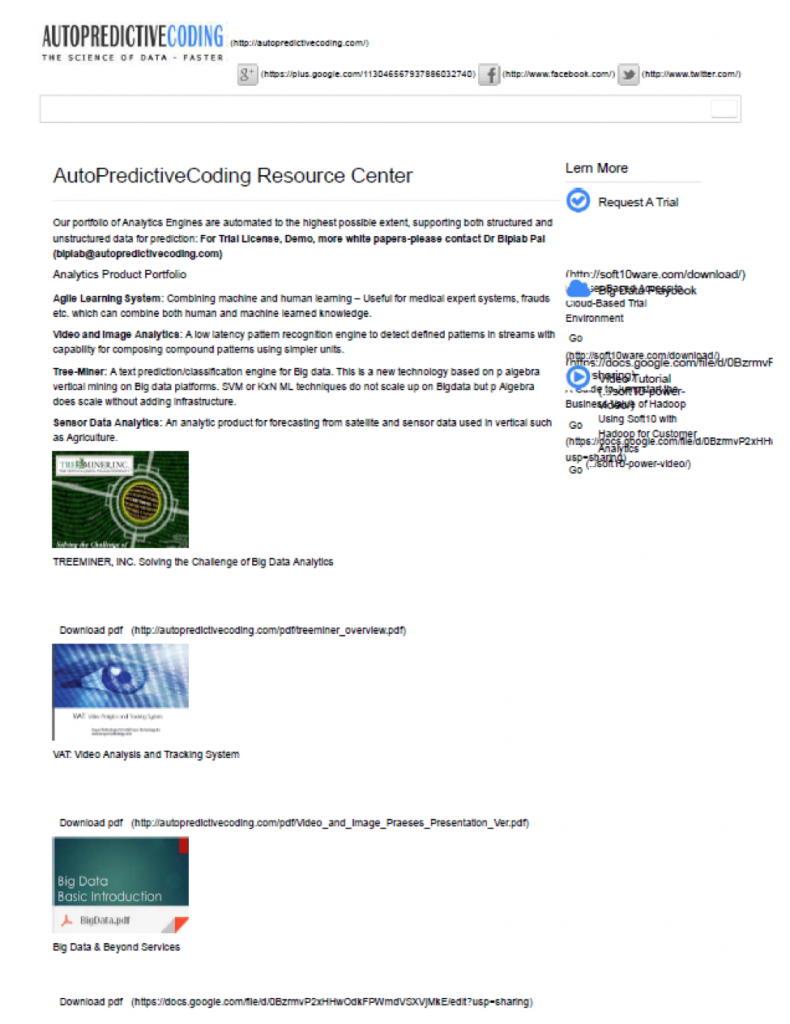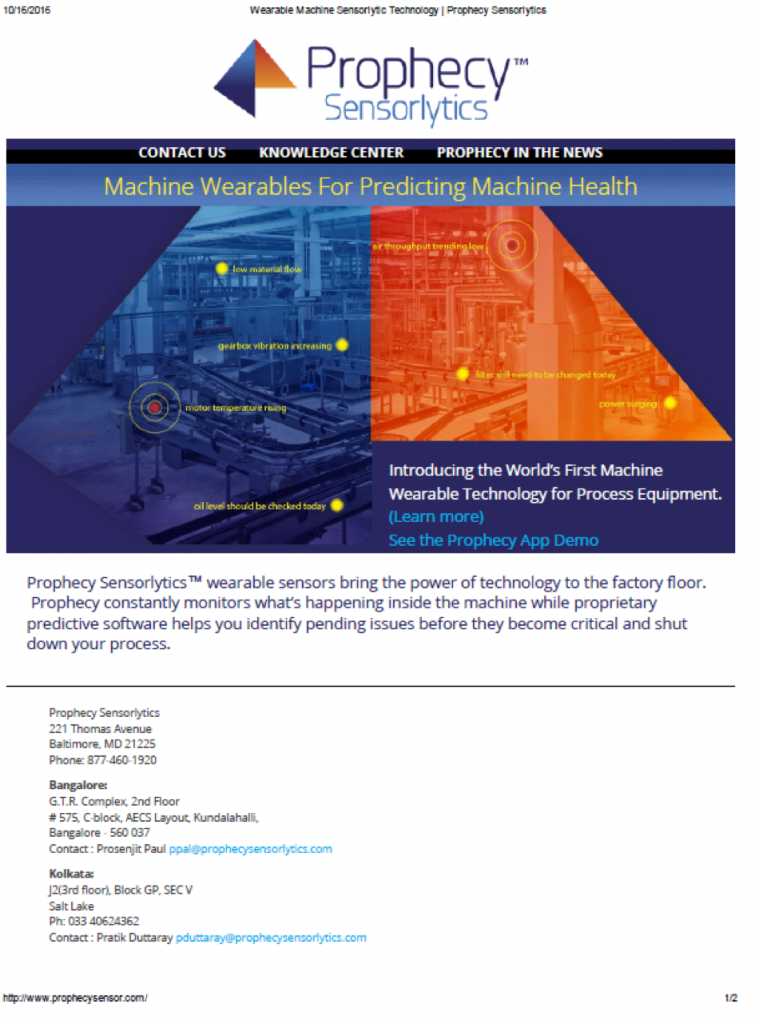The Cognitive Shell | Brooks-Iyengar Algorithm | Optimal Sensor Technique
About:
Dr. Iyengar, a computer scientist of international repute, is a pioneer in the field and has made fundamental contributions in the areas of information processing for sensor fusion networks, robotics and high performance algorithms, all relevant to critical event detection systems as seen in following:
- Co-inventor of the Brooks–Iyengar algorithm for noise tolerant distributed control which bridges the gap between sensor fusion and Byzantine fault tolerance, providing an optimal solution to the fault-event disambiguation problem in sensor-networks (1996);
- Co-inventor of a novel, paradigm shifting method for grid coverage of surveillance and target location in distributed sensor networks (2002);
- Provided seminal work for automated analyses and interpretation of satellite imagery of the ocean and other unknown terrain (1994);
- Co-invented the Cognitive Information Processing Shell, a complex event processing architecture and engine which recognizes and responds to complex patterns in mission critical, real-time applications (2010);
- Solved an open problem in graph recognition, laying foundation for fast parallel computing for large scale data sets (1988);
The impact of his research contributions can be seen in places like Raytheon, Telcordia, Motorola, the United States Navy, DARPA agencies, etc. Details can be found in the following sections.
Impacts
The Cognitive Information Processing Shell
Three representative contributions by Dr. S.S. Iyengar have enabled society, to navigate through knowledge space in a natural manner similar to how people navigate in the real world. His contributions that have brought huge societal, industrial, and foundational impact. The first contribution is a collection of work that culminated in the development of the Cognitive Information Processing (CIM) Shell. Widely adopted by industry, CIM is competing with IBM’s Watson and the recent literature including industry reports have pointed significant advantages of CIM over IBM’s Watson. Details of this profound technology are included in this section.
[Insert Recent Book Cover with Link]
S.S. Iyengar Co-invented the Cognitive Information Processing Shell Co-inventor of the patented Cognitive Information Processing (CIM) Shell, a complex event processing architecture and engine which recognizes and responds to complex patterns in mission critical, real-time applications (IEEE Comp. 2010) This new comprehensive computational framework created by Iyengar fuses disparate streaming data, like text and video, to create an interactive sensing-to-cognition, inspection and visualization system that provides real-time monitoring and analysis that can be applied to online diagnosis of manufacturing machines (LSU 2016-031), agricultural systems, and petroleum production, The CIM Shell not only sends an alert but reconfigures on the fly in order to isolate a critical event and fix the failure, unlike IBM’s Watson which only identifies the failure. (http://searchbusinessanalytics.techtarget.com/feature/Cognitive-computing-for-all-Think-about-it) (Business Information).
Impact in a Nutshell…
- Foundational technology for Spotcheck Technology’s online Diagnosis of Manufacturing Machines
- Licensed by AutoPredictiveCoding, LLC’s Customers…
- Novattec, ProphescySensorLytics, Others
- The Total Addressable Market (TAM) for this technology $9.1 billion dollars in 2014.
- Predicted to be $24.7 billion by 2019 (Spotcheck Tech)
- Used by DeepSAT Video Analytics & Image
TAM $41 Billion
Also, used by: NASA Ames Research for satellite imagery and decision support and USDA for decision support.
[tailor_gallery ids=”189,190″ layout=”grid” items_per_row=”2″ dots=”1″ thumbnails=”1″ image_link=”none” image_size=”medium” class=”tailor-581b96ea57164″][/tailor_gallery]
One of Dr. Iyengar’s project along with Dr. Phoha(LA Tech) and Dr. Kannan(LSU) entitled “Fast Web Page Allocation on a Server Using Self-Organizing Properties of Neural Networks” was selected in World’s Best Technology Showcase in the year 2007. This is a highly competitive summit and other competitors were Los Alamos Labs, Johns Hopkins University, EPA, NASA and many other.
http://www.wbtshowcase.com/wbt/web.nsf/pages/index.html

How Does It Work?
The following figures outline how the system operates and provides trend detection rules for interpreting prior information and identifying it as a complex event to determine associated risks and future operations.
Had the CIM Shell been integrated with the Deepwater Horizon infrastructure it would’ve interpreted prior maintenance incidents and concerns voiced by VPs engineers as complex events and magnified the associated risks, potentially averting the Deepwater Horizon disaster.
Business, Media, and Academic References
Cognitive computing for all? Think about it by Stephanie Neil in SearchBusinessAnalytics.com
The health care industry suffers from an ailment known as information overload. It’s a condition that makes it difficult for doctors and insurance providers to quickly determine the procedures that will be required and covered for each patient. The individual’s history, years of case files and clinical evidence must be considered -no small feat for a human. But it’s as easy as saying “aah” for Watson — IBM’s artificial intelligence computer system that processes natural language questions against a deep well of data to compute evidence-based answers in a matter of seconds. Read More >>
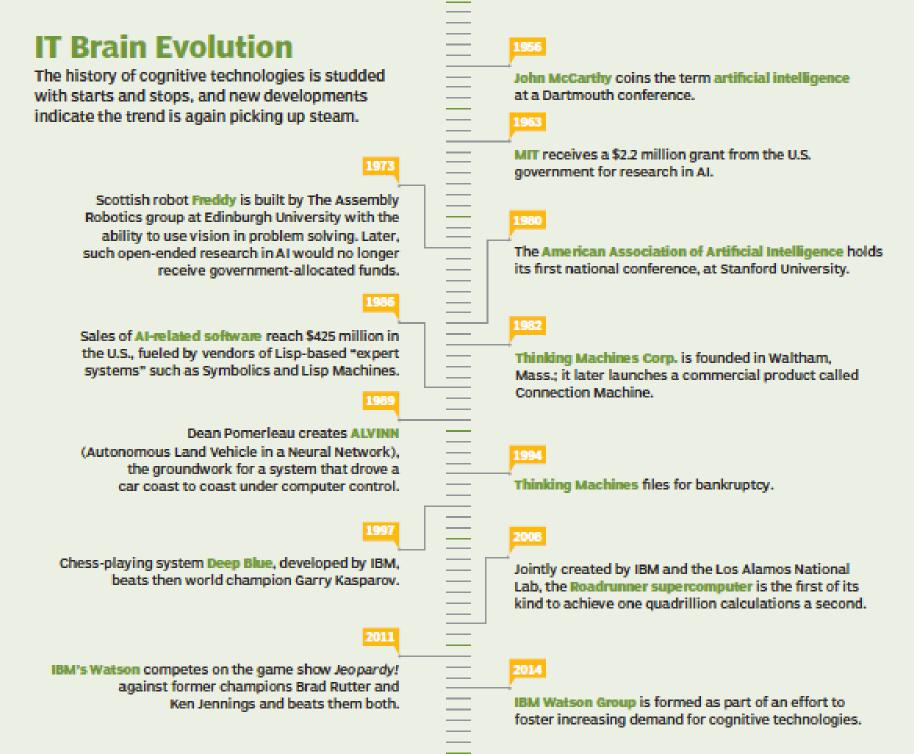
ABIresearch estimates that the Total Addressable Market (TAM) for this CIM Shell technology as used by SpotCheck Technology for Online Diagnosis of Manufacturing Machines and currently being licensed by AutoPredictiveCoding LLC, with Novatec, and Prophecy SensorLytics customers using the technology was $9.1 billion dollars in 2014. DeepSAT: Video Analytics and Image is using the technology for video analysis with a Total Addressable Market (TAM) for this technology of $41 billion. ABIresearch predicts strong growth in both sectors for this licensed technology continuing through 2020.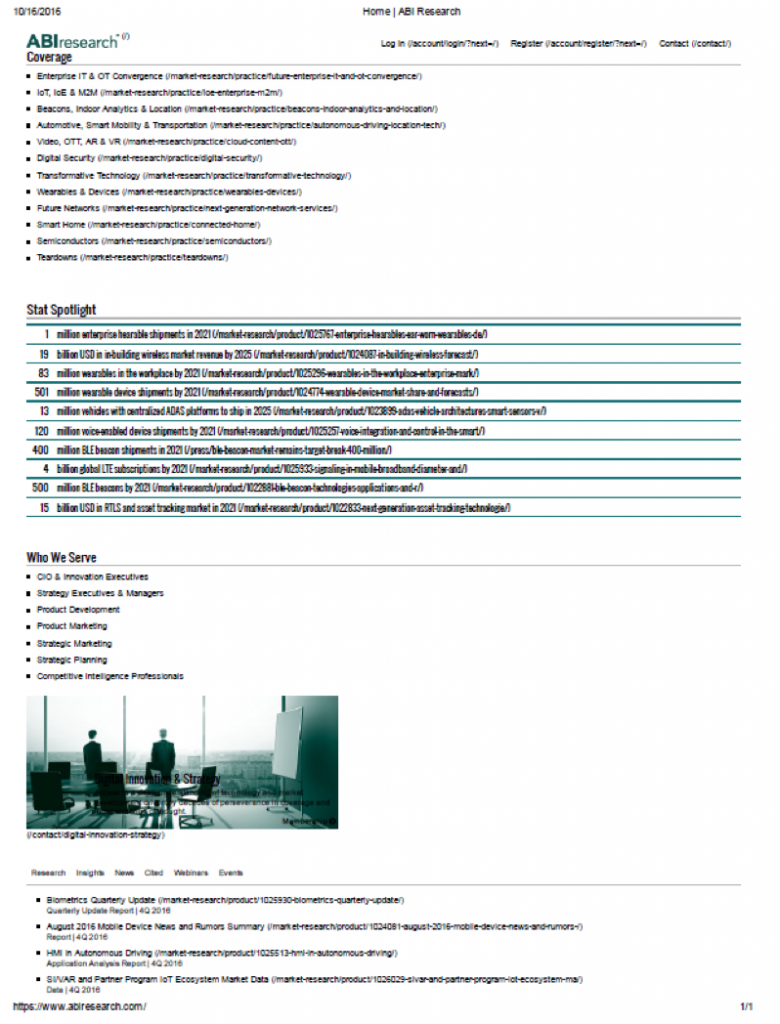
DeepSAT, developed by NVIDIA provides video analytics and imaging using the CIM Shell technology. Nvidia is developing the DeepSAT technology through the NASA Ames Research Center.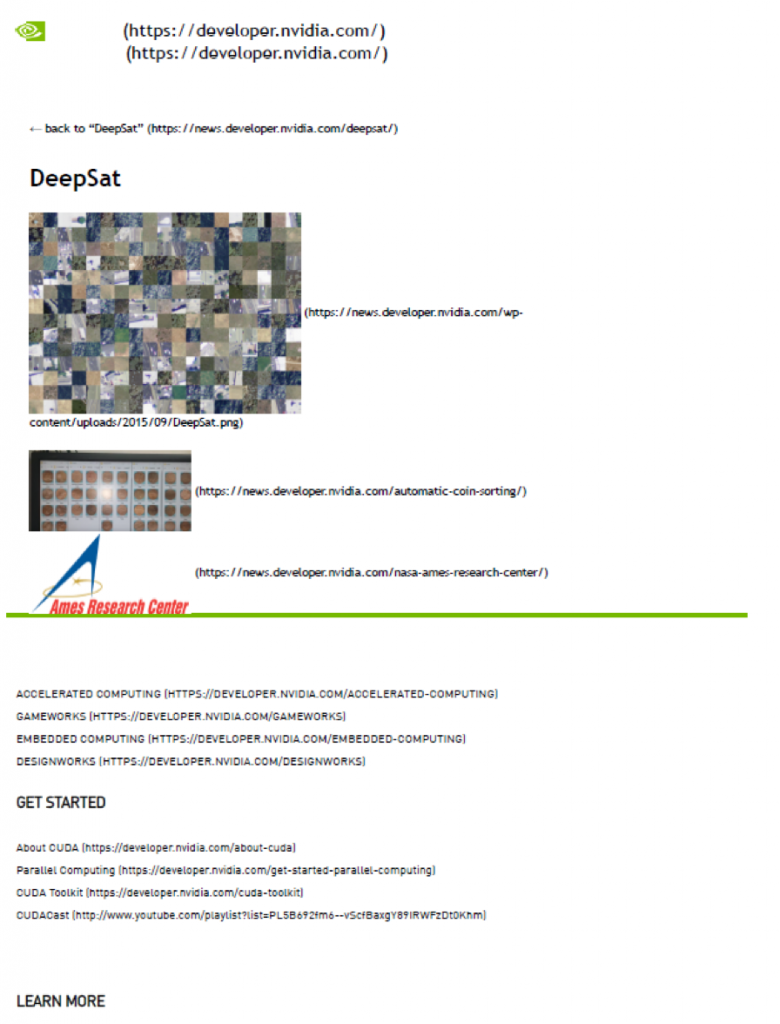
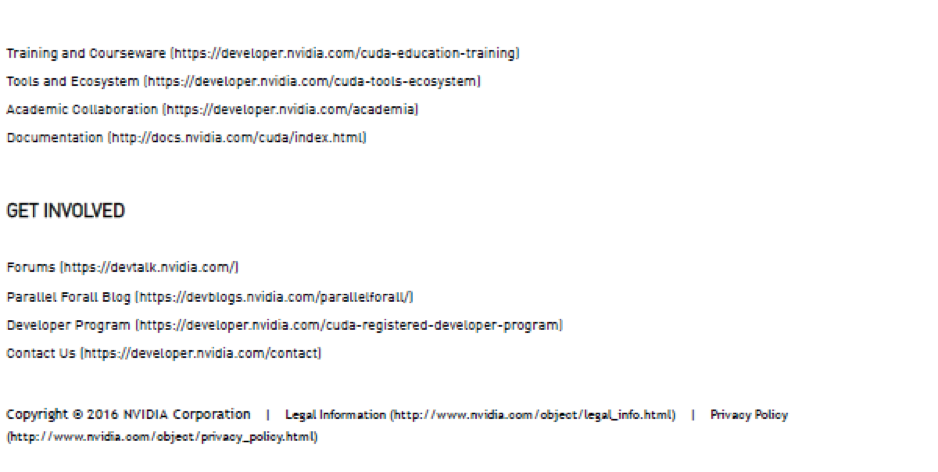
“DeepSAT—A Learning Framework for Satellite Imagery” is a journal article that explains the CIM Shell technology as it applies to satellite image classification. The article appeared in 2015 in the Association for Computing Machinery (ACM) magazine. (2015 ACM. ISBN 978-1-4503-3967-4/15/11, http://dx.doi.org/10.1145/2820783.2820816.) [Basu, S., Ganguly, S., Mukhopadhyay, S., DiBiano, R., Karki, M., & Nemani, R. (2015, November). DeepSat: a learning framework for satellite imagery. In Proceedings of the 23rd SIGSPATIAL International Conference on Advances in Geographic Information Systems (p. 37). ACM.]
NAIP: National Agricultural Imagery Project from USDA used CIM Shell technology in conjunction with other data to provide decision support. Additional information can be found at: https://www.fsa.usda.gov/programs-and-services/aerial-photography/imagery-programs/naip-imagery/ and NAIP fact sheet.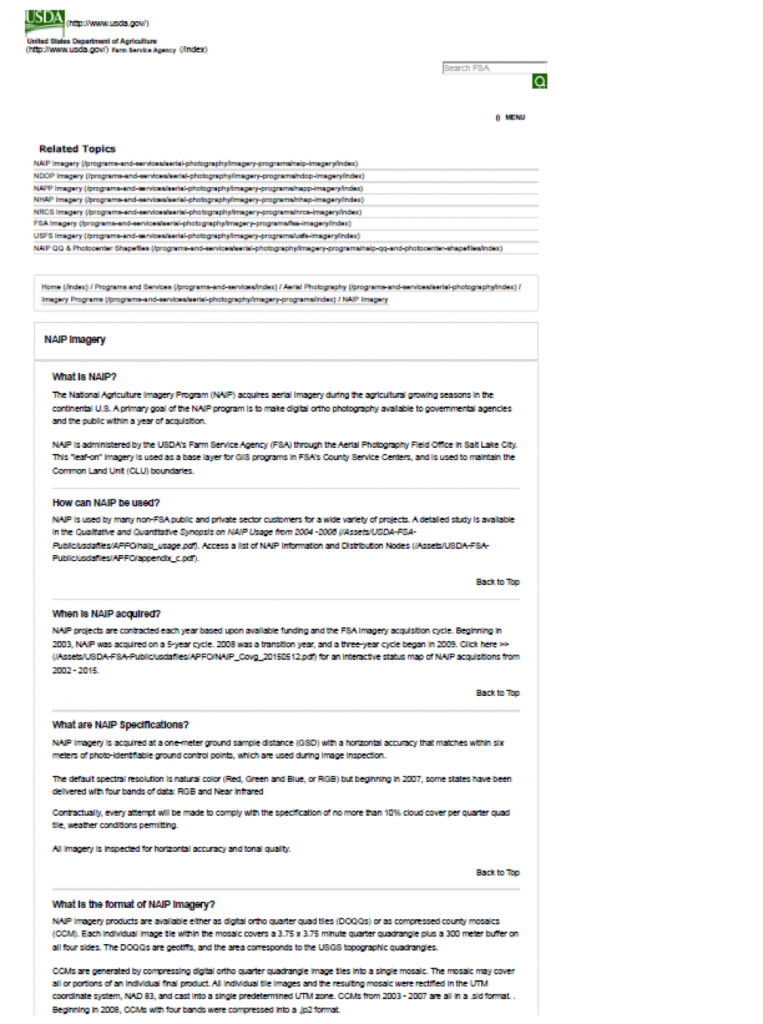

CIM Shell technology, additional Information can be found in the following.
“Preventing Future Oil Spills with Software-Based Event Detection“, IEEE Computers:
S. S. Iyengar, Supratik Mukhopadhyay, Christopher Steinmuller, and Xin Li “Preventing Future Oil Spills with Software-Based event Detection”, IEEE Computers, pp: 76-78, August 2010.
This article was featured in
For access to more content from the IEEE Computer Society,
see computingnow.computer.org
World Renowned Brooks – Iyengar Distributed Sensing Algorithm
The Brooks–Iyengar hybrid algorithm for distributed control in the presence of noisy data combines Byzantine agreement with sensor fusion. It bridges the gap between sensor fusion and Byzantine fault tolerance. This seminal algorithm unified these disparate fields for the first time. Essentially, it combines Dolev’s algorithm for approximate agreement with Mahaney and Schneider’s fast convergence algorithm (FCA). The algorithm assumes N processing elements (PEs), t of which are faulty and can behave maliciously. It takes as input either real values with inherent inaccuracy or noise (which can be unknown), or a real value with apriori defined uncertainty, or an interval. The output of the algorithm is a real value with an explicitly specified accuracy. The algorithm runs in O(NlogN) where N is the number of PEs: see Big O notation. It is possible to modify this algorithm to correspond to Crusader’s Convergence Algorithm (CCA), however, the bandwidth requirement will also increase. The algorithm has applications in distributed control, software reliability, and High-performance computing. Wikipedia
Application in DARPAS’s program demonstration with BBN, Cambridge Massachusetts, MURI, researchers from PSU/ARL, Duke, University of Wisconsin, UCLA, Cornell, and LSU.
In 2000, the DARPA program manager used two major demonstrations to showcase SensIT’s advances and document the ability of sensor networks to provide new capabilities. One demonstration took place at the Twentynine Palms, California Marine Training grounds in August 2000, the other took place at BBN offices in Cambridge, Massachusetts in October 2011. Dr. Gail Mitchell of BBN coordinated this work for BBN, DARPA’s SensIT integration contractor. Both demonstrations used the Brooks-Iyengar fusion approach to combine sensor readings in real-time. Acoustic, seismic, and motion detection readings from multiple sensors were combined and fed into a distributed tracking system. The first deployment was effective but noisy. The second demonstration built on the success of the first testing California. An improved outfielder algorithm was used to determine which node was best situated to continue existing tracks. This work was an essential precursor to the Emergent Sensor Plexus MURI from Penn State Applied Research Laboratory (PSU/ARL) with Dr. Sashi Phoha as PI. In that MURI, researchers from PSU/ARL, Duke, University of Wisconsin, UCLA, Cornell, and LSU extended SensIT’s advances to create a practical and survivable sensor network applications.
Application of this algorithm in modern day Linux operating system for combining data in fault-tolerance.(MINIX)
In 1996, Iyengar’s group, in collaboration with Brooks and with funding from Oak Ridge National Laboratory and the office of Naval Research, Invented a method of fault tolerance modeling that offers a computationally inspired real-time management solution. This work has emerged in new versions of real-time extensions to Linux Operating Systems. Many of these algorithms were used and installed in the RT Linux Operating System. They are now working on formal model verification by incorporating the algorithms into a new embedded kernel for robotic applications.
The profound contribution of the Brooks-Iyengar Distributed Computational Sensing work has enhanced new real-time features by adding fault tolerant capabilities.
Selected Letter
Carlton University is developing a formal model verification by incorporating the algorithms into a new embedded kernel for robotic applications.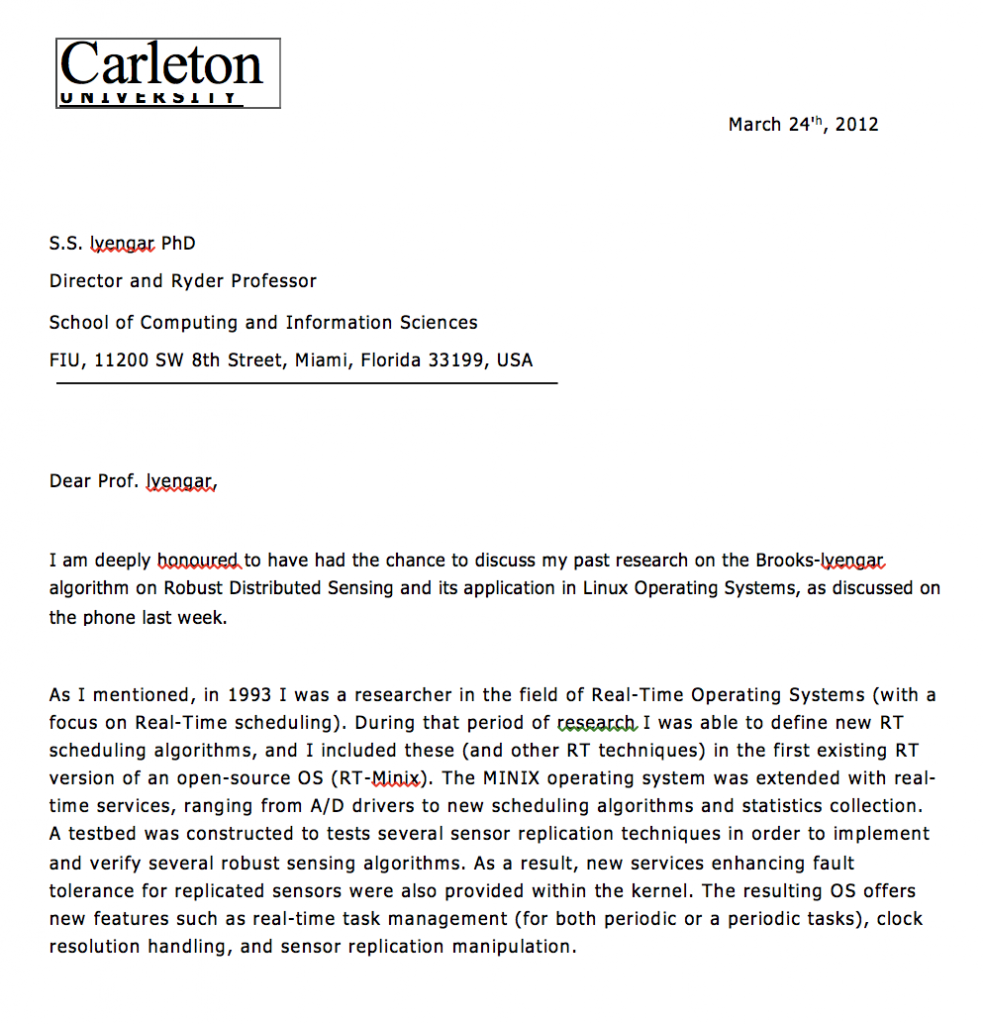
Telcordia Technologies, Inc., also incorporated the Brooks – Iyengar Algorithm into their work.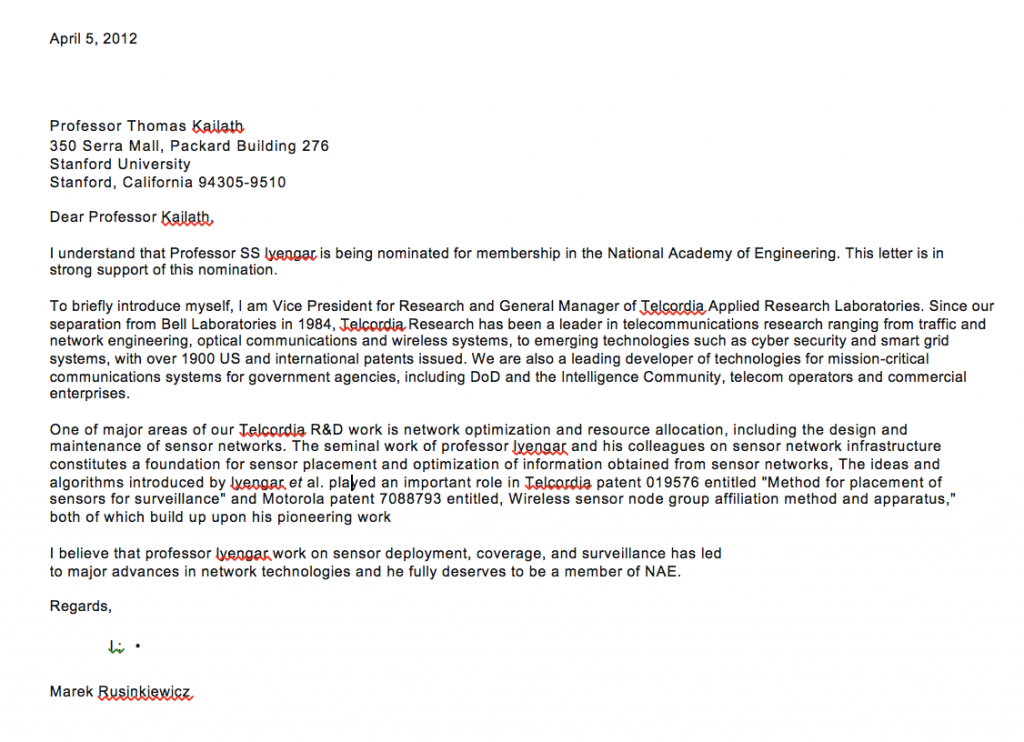
…The seminal work of professor Iyengar and his colleagues on sensor networks infrastructure constitutes a foundation for sensor placement and optimization of information obtained from sensor networks. The ideas and algorithms introduced by Iyengar et al. Played an important role in Telcordia patent 019576 entitled “Method for placement of sensors for Surveillance” and Motorola patent 7688793 entitled, “Wireless sensor node group affiliation method and apparatus,” both of which build up upon his pioneering work.
I believe that professor Iyengar work on sensor deployment, coverage, and surveillance has led to major advances in network technologies….~ Marek Rusinkiewicz Vice President for research and General Manager of Telcordia
Intelligence, Information and Service Raytheon
…the impact of this work has been significant. The Brooks-Iyengar Algorithm makes it possible to extract reliable data from sensor networks when some sensors are unreliable, thus adding a fault tolerant aspect. Unreliable sensor data are typically the case in systems that Raytheon develops for its customers, so applications of the algorithm made Raytheon and its customers more successful without increased investment in improved sensor reliability. This saved money, always important in today’s increasingly budget conscious environment.
…the Brooks-Iyengar algorithm continues to have significant impact where it is applied to Raytheon’s programs.~ Intelligence, Information and Service Raytheon
Millions of dollars of market growth. Iyengar’s work has had significant impact in industrial applications/ research, and continuing scientific research. Many new ideas have been spawned from his seminal work, resulting in a variety of new innovations by industries such as Motorola, Tele Cordia, Boeing, and even new chip-design at universities. New applications from industrial research are ongoing, each resulting in millions of dollars of market growth.
The intellectual advancement of his ideas has been incorporated into over 23 Ph.D. thesis and other new thesis and dissertations resulting in scientific discoveries around the world. His work has impacted thesis in Germany, the United States, and China. His foundational work has also resulted in innumerable funding opportunities provided by the National Science Foundation to continue to advance research in this significant area.
[tailor_gallery ids=”169,170,174,168,171,172,173,175,167,176,178,177,179″ layout=”grid” masonry=”0″ items_per_row=”3″ dots=”1″ thumbnails=”1″ image_link=”none” image_size=”medium” border_color=”#ffffff” border_style=”none” class=”tailor-582487486c8cp”][/tailor_gallery]
The Optimal Sensor Placement Technique
Co-inventor of an optimal sensor placement technique relating to a limited number of sensors at selected locations in order to provide protection to all locations in real-time applications, which has been included in patents by Telcordia and Motorola, as well as other companies. (IEEE Computers, 2002. This groundbreaking work laid an intellectual foundation for designing policies and techniques in many areas of real-time applications from surveillance systems to telecommunications systems.
Impact:
Iyengar’s work has had a significant impact in industrial applications and applied research, as well as in continuing basic scientific research. Many new ideas have been spawned from his seminal work, resulting in a variety of new innovations by industries such as Motorola, Telcordia, Boeing, and even new chip-design at universities. New applications from industrial research are ongoing, each resulting in millions of dollars of market growth.
The intellectual advancement of his ideas has been incorporated into over 23 Ph.D. thesis and other new thesis and dissertations resulting in scientific discoveries around the world. His work has impacted thesis in Germany, the United States, and China. His foundational work has also resulted in innumerable funding opportunities provided by the National Science Foundation to continue to advance research in this significant area.
Impact in a Nutshell…
- “Profound contribution,” “significant impact in industrial applications and research”
- Foundational to new patents by Telcordia and Motorola for mobile device antenna placement and optimization
- Used by Boeing: “millions of dollars in expected market growth as a result of the technology”
- Used by universities to develop new chip design
- Intellectual merit: used and incorporated into more than 23 Ph.D. dissertations
- Foundation of advanced scientific discoveries in Germany, China, USA and around the world.
How Does It Work?
Optimal Sensor Placement Technique provides a solution to fault-event disambiguation problems in sensor networks, or in other words, how do you tell if your sensors are reporting false data or are being affected by environmental conditions? Wireless sensor networks are often unattended, autonomous systems with severe energy constraints and composed of low-end nodes with limited reliability. The optimal sensor placement algorithm developed by Dr. S.S. Iyengar allows us to determine where we may need an overlap of sensors in order to cover faults in some of the sensors and still provide optimal sensor coverage of the area in the most cost effective manner. For everyone, this allows us to gather the correct data at all times within a selected area. For business and industry, the economic benefits are substantial, allowing a company to cover maximum area with reliable sensors at the least cost.
Business, Media and Academic References
Business and industry, as well as scientists from universities around the world have incorporated this advanced technology into both applied research and engineering, and theoretical, foundational research. The company recognition, organizations using the technology, university peer-reviewed journal research and media attention for this discovery are provided in this section.
Telcordia Technologies, Inc., also incorporated the Optimal Sensor Placement Technique into their work.
The seminal work of professor Iyengar and his colleagues on sensor networks infrastructure constitutes a foundation for sensor placement and optimization of information obtained from sensor networks. The ideas and algorithms introduced by Iyengar et al. Played an important role in Telcordia patent 019576 entitled “Method for placement of sensors for Surveillance” and Motorola patent 7688793 entitled, “Wireless sensor node group affiliation method and apparatus,” both of which build up upon his pioneering work.
I believe that professor Iyengar’s work on sensor deployment, coverage, and surveillance has led to major advances in network technologies….
~ Marek Rusinkiewicz Vice President for Research and General Manager of Telcordia
[tailor_gallery ids=”169,170,175,167,214″ layout=”carousel” items_per_row=”2″ autoplay=”1″ arrows=”1″ dots=”0″ thumbnails=”1″ image_link=”none” image_size=”medium” border_color=”#ffffff” border_style=”none” class=”tailor-582484f6b6211″][/tailor_gallery]
“Grid coverage for surveillance and target location in distributed sensor networks,”
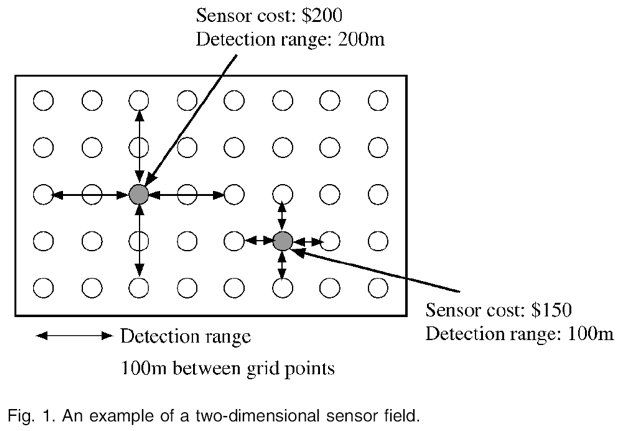 K Chakrabarty, SS Iyengar, H Qi, E Cho, “Grid coverage for surveillance and target location in distributed sensor networks,” IEEE transactions on computers 51 (12), 1448-1453
K Chakrabarty, SS Iyengar, H Qi, E Cho, “Grid coverage for surveillance and target location in distributed sensor networks,” IEEE transactions on computers 51 (12), 1448-1453
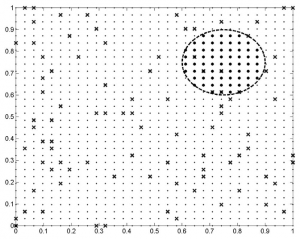 “Distributed Bayesian algorithms for fault-tolerant event region detection in wireless sensor networks,” appeared in IEEE Transactions on Computers 53 (3), 241-250, and further explains the groundbreaking Optimal Sensor Placement technology.
“Distributed Bayesian algorithms for fault-tolerant event region detection in wireless sensor networks,” appeared in IEEE Transactions on Computers 53 (3), 241-250, and further explains the groundbreaking Optimal Sensor Placement technology.
[B. Krishnamachari, S. Iyengar, “Distributed Bayesian algorithms for fault-tolerant event region detection in wireless sensor networks,” IEEE Transactions on Computers 53 (3), 241-250]
HIGHLY CITED PAPERS
Sensor deployment and target localization based on virtual forces
Y Zou, K Chakrabarty, IEEE INFOCOM 2003: 990 citations
Journal version:
Sensor deployment and target localization in distributed sensor networks
Y Zou, K Chakrabarty
ACM Transactions on Embedded Computing Systems, 2004: 473 citations
Grid coverage for surveillance and target location in distributed sensor networks
K Chakrabarty, SS Iyengar, H Qi, E Cho, IEEE transactions on Computers, 2002: 908 citations
Sensor placement for effective coverage and surveillance in distributed sensor networks
SS Dhillon, K Chakrabarty
Wireless Communications and Networking, 2003: 573 citations
Sensor placement for grid coverage under imprecise detections
SS Dhillon, K Chakrabarty, SS Iyengar
Information Fusion, 2002: 359 citations 359
INDUSTRY IMPACT: PATENTS
8019576: Method for placement of sensors for surveillance
Issued: September 13, 2011
Assignee company: Telcordia
http://www.patentgenius.com/patent/8019576.html
7688793: Wireless sensor node group affiliation method and apparatus
Issued: March 30, 2010
Assignee company: Motorola
http://www.patentgenius.com/patent/7688793.html
7,676,805 B2
Issued: March 9, 2012
Assigned to: Motorola
8131839 B2: Method and apparatus for resource assignment in a sensor network
Issued: March 6, 2012
Assignee company: Motorola
https://www.google.com/patents/US8131839
https://www.google.ch/patents/WO2015132691A2?cl=en (Method for deploying sensors)
Decentralized detection, localization, and tracking utilizing distributed sensors
US 7480395 B2
January 2009
https://www.google.com/patents/US7480395
Systems and methods for characterizing the coverage of ad hoc sensor networks
US 7091902 B2 (Xerox Corporation)
August 2006
https://www.google.com/patents/US20050134499
https://www.google.com/patents/US20050134499
DOCUMENTED IMPACT ON RESEARCH AT BOEING CORPORATION
Mattikalli, R. Fresnedo, R. Frank, P. Locke, S. Thunemann, Z. Optimal Sensor Selection and Placement for Perimeter Defense, 2007.
DOCUMENTED IMPACT ON RESEARCH AT DEPARTMENT OF DEFENSE
Capt. S. Hynes and N. S. Rowe, “Multi-Agent Simulation for Assessing Massive Sensor Deployment”, Article at Naval Postgraduate School, 2004
http://www.dodccrp.org/events/2004_CCRTS/CD/papers/072.pdf
IMPACT ON GRADUATE THESES AND IN DIVERSE AREAS (INCLUDING INTERNATIONAL IMPACT)
- Integrated Circuit Design: On-Chip Thermal Sensor Placement, M.S. Thesis at UMass-Amherst (Yun Xiang), 2008
- Wireless Networks: Secure Localization and Node Placement Strategies for Wireless
Networks, Ph.D. Thesis at Auburn University (Santosh Pandey), 2007
- Robotics: Energy-Efficient Mobile Robots, Ph.D. Thesis (Yongguo Mei) at Purdue University (2007)
- Sensor Management: Global Sensor Management: Allocation of Military Surveillance Assets, Ph.D. Thesis at NC State University (Kristin Arney), 2008
- Wireless Sensor Networks: Effiziente Kommunikation und Optimierung der Knoten-Positionierung in drahtlosen Sensornetzen unter Ausnutzung räumlicher Korrelationen (in German), Ph.D. Thesis at Technical University of Aachen, Germany (Frank Odewurtel), 2011
- Distributed Self-Deployment in Visual Sensor Networks,(MS thesis), Christopher Allan Beall August 2006, The University of Tennessee, Knoxville.
- Energy-efficient coverage with wireless sensors(Ph.D. thesis) , Guanqun Yang, Iowa State University,2010
- Intelligent deployment strategies for passive underwater sensor networks, Ph.D. thesis), Rochester Institute of Technology, Erik Golen,2009,
- Collaborative Area Monitoring Using Wireless Sensor Networks with Stationary and Mobile Nodes, Theofanis P. Lambrou, Ph.D. thesis , University Of Cyprus.
- Self-Organizing Hybrid Sensor System with Distributed Data Fusion For Intruder Tracking and Surveillance, RAVISHANKAR PALANIAPPAN M.S. University of Central Florida, 2003
- Collaborative Solutions to Visual Sensor Networks, Mahmut Karakaya, (Ph.D. Thesis), The University of Tennessee, Knoxville,2011.
- Cargo Monitoring: Optimal Communications Systems and Network Design for Cargo Monitoring, Ph.D. Thesis at University of Kansas (Daniel Fokum),
- An Energy-Efficient Distributed Algorithm for k-Coverage Problem in Wireless Sensor Networks, Chinh Trung Vu,(MS thesis), Georgia State University,2007.
- MULTI-AGENT SIMULATIONS (MAS) FOR ASSESSING MASSIVE SENSOR COVERAGE AND DEPLOYMENT, Sean E. Hynes, (MS thesis), Naval Postgraduate School, 2003.
- Human Activities Space: A Multi Sensor System for a Human Activities Space Aspects of Planning and Quality Measurement, Blekinge Institute of Technology, Sweden, Licentiate Dissertation Series, 2008.
- Structural Health Monitoring: Identification of Damage Using Lamb Waves, Springer Book volume 2009.
- Dimensional Measurement: Distributed Large-Scale Dimensional Metrology: New Insights (book).
In the area of sensor networks narrowly defined, cited in over 23 Ph.D. thesis.
Click Here to see a list of cited Ph.D. thesis
IMPACT ON NSF GRANTS
Several NSF grants were awarded to researchers who have built up on and leveraged the pioneering work on sensor deployment and minimalistic sensor networks. Here is a snapshot of some these grants:
Award Number: CNS-1054935 (“CAREER: A Theoretical Foundation for Achieving Sustainability and Scalability in 3D Wireless Sensor Network Deployments”)
Award Number: CNS- 1152134 (“Optimal Surface Gateway Deployment for Underwater Acoustic Sensor Networks”)
Award Number: 0449309 (“Collaborative Signal and Information Processing in Sensor Networks”)
Award Number: CNS-1149611 (“SensorFly: Minimalistic Dynamic Sensing and Organization in Groups of Semi-Controllable Mobile Sensing Devices”)


